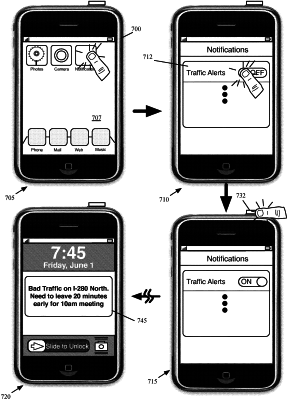| CPC G06N 5/02 (2013.01) [G01C 21/3617 (2013.01); G01C 21/362 (2013.01); G01C 21/3691 (2013.01); G06N 5/022 (2013.01); G06N 20/00 (2019.01); G06Q 10/109 (2013.01); H04L 67/02 (2013.01); H04L 67/10 (2013.01); H04L 67/52 (2022.05); H04L 67/535 (2022.05); H04W 4/025 (2013.01)] | 21 Claims |

|
1. A method implemented by a computing device, the method comprising:
identifying one or more candidate predicted destinations for the computing device;
subsequent to identifying the one or more candidate predicted destinations, selecting, from the one or more candidate predicted destinations, a first predicted destination based on a calendar event at least by:
identifying the calendar event; and
determining that the first predicted destination, of the one or more candidate predicted destinations, is associated with the calendar event;
determining a start time associated with the calendar event;
monitoring a current amount of traffic on a first route to the first predicted destination; and
automatically triggering, based on (a) a difference between a current time and the start time associated with the calendar event, and (b) an amount of time to traverse the first route based on the current amount of traffic along the first route as determined by the monitoring operation:
a presentation, on a display of the computing device, of a first notification comprising a first time to leave for the calendar event based on: (1) the start time associated with the calendar event, and (2) the current amount of traffic along the first route to the first predicted destination.
|